I have a list of coordinates:
y,x
445.92,483.156
78.273,321.512
417.311,204.304
62.047,235.216
87.24,532.1
150.863,378.184
79.981,474.14
258.894,87.74
56.496,222.336
85.105,454.176
80.408,411.672
90.656,433.568
378.027,441.296
433.964,290.6
453.606,317.648
383.578,115.432
128.232,312.496
116.276,93.536
94.072,222.336
52.226,327.308
321.663,187.56
392.972,279.008
I would like to plot a density map (or heat map) based on these points, using matplotlib. I am using pcolormesh and contourf.
My problem is that pcolormesh is not having same size of the pitch:

This is the code:
x, y = np.genfromtxt('pogba_t1314.csv', delimiter=',', unpack=True)
#print(x[1], y[1])
y = y[np.logical_not(np.isnan(y))]
x = x[np.logical_not(np.isnan(x))]
k = gaussian_kde(np.vstack([x, y]))
xi, yi = np.mgrid[x.min():x.max():x.size**0.5*1j,y.min():y.max():y.size**0.5*1j]
zi = k(np.vstack([xi.flatten(), yi.flatten()]))
fig = plt.figure(figsize=(9,10))
ax1 = fig.add_subplot(211)
ax1.pcolormesh(xi, yi, zi.reshape(xi.shape), alpha=0.5)
ax1.plot(y,x, "o")
ax1.set_xlim(0, 740)
ax1.set_ylim(515, 0)
#overlay soccer field
im = plt.imread('statszone_football_pitch.png')
ax1.imshow(im, extent=[0, 740, 0, 515], aspect='auto')
fig.savefig('pogba1516.png')
Here it is a link for the csv file: https://dl.dropboxusercontent.com/u/12348226/pogba_t1314.csv
